Full Form of IIT
IIT FULL FORM
IIT stands for Indian Institute of Technology. These are the leading public technical and research institutes. The IITs are spread throughout the country. They are autonomous institutes with a separate board of directors. IITs are governed by the Institutes of Technology Act, 1961. According to this ac, IITs are the Institutes of National Importance. Under this act, the powers, duties, and framework for the governance of these IITs are also clearly mentioned. There are twenty-three IITs listed in this act. IIT council works as a link between all these IITs and also oversees their administration. The examination conducted for the entrance or get admission in these IITs is the JEE Advanced for undergraduate level and GATE for postgraduate level.
The location of all the IITs are as follows:
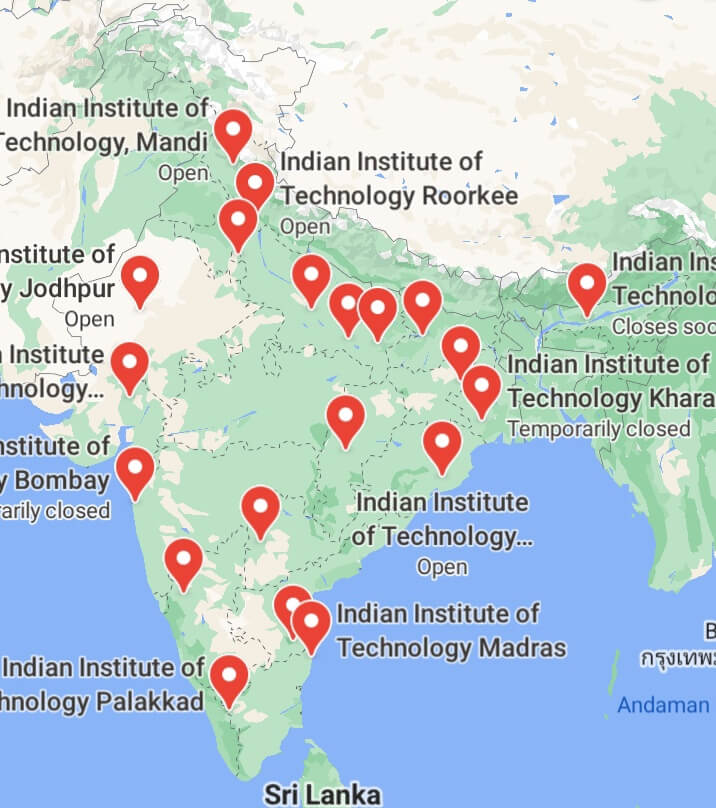
HISTORY
Sardar Sir Jogendra Singh, who was a member of Viceroy's Executive Council, formed a committee in 1946 to promote technical education and develop the post-war industries in India. For this purpose, the committee decided to create a Higher Technical Institution in the country. There were 22 members in the committee who were working under the supervision of Nalini Ranjan Sarkar.
As per the opinion of these members, the institutions must be spread throughout the country as secondary affiliated institutions with the lines of the Massachusetts Institute of Technology.
In May 1950, the country got its first IIT, which was located at Hijli Detention Camp, Kharagpur, West Bengal. On 18 August 1951, the inauguration ceremony of the institute was organized, and the inauguration was done by Maulana Abul Kalam Azad. On 15 September 1956, the parliament passed the Indian Institute of Technology (Kharagpur) Act. The act gave the title of Institute of National Importance to the IIT.
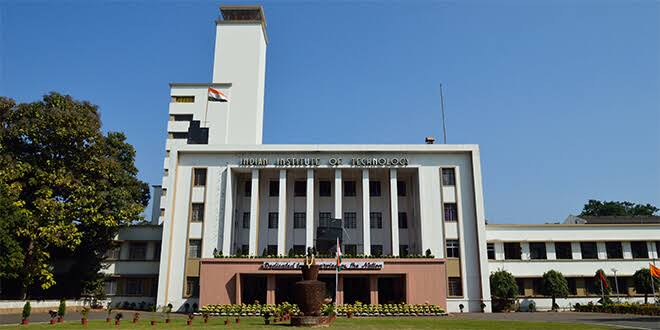
Four new campuses were established at Bombay, Madras, Kanpur, and Delhi in 1958, 1959, 1959, and 1961 respectively, on the recommendations of the Sarkar Committee. To prevent the regional imbalance, the locations of these four campuses were chosen throughout the country. For the addition of these new IITs, the amendment was done in the Indian Institute of Technology Act. Sixth IIT was established at Guwahati under the Assam Accord in 1994 after a promise made by Prime Minister Rajiv Gandhi to the students of Assam. The oldest engineering college in India, the University of Roorkee, was also converted into an IIT in the year 2001. This was the seventh IIT of the country.
Many IITs were developed in the country in the past few years. On 1 October 2003, an announcement was made by the former Prime Minister Atal Bihari Vajpayee to create more IITs by upgrading some existing academic institutions that have enough potential. In the 11th Five Year Plan, eight new states were introduced to established the IITs as they follow the prescribed guidelines of the S K Joshi Committee for institutions aspiring to be IITs.
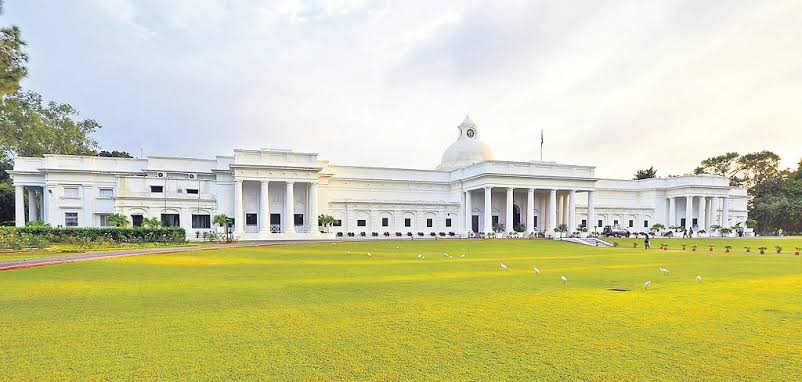
Between 2008 and 2009, eight new IITs were established in Jodhpur Hyderabad, Bhubaneswar Mandi Gandhinagar Indore Ropar and Patna. The Institute of Technology, Banaras Hindu University, was converted into IIT (BHU) Varanasi and the Indian School of Mines Dhanbad was converted into IIT (ISM) Dhanbad in 2012 and 2015, respectively. Later in 2016, six more IITs were set up in Goa, Bhilai, Jammu, Palakkad, and Dharwad. These IITs got approval after an amendment in the bill in 2016.
LIST OF INSTITUTES
- IIT Kharagpur, West Bengal
- IIT Bombay, Maharashtra
- IIT Madras, Tamilnadu
- IIT Kanpur, Uttar Pradesh
- IIT Delhi, Delhi
- IIT Guwahati, Assam
- IIT Roorkee, Uttarakhand
- IIT Ropar, Punjab
- IIT Bhubaneswar, Odisha
- IIT Gandhinagar, Gujarat
- IIT Hyderabad, Telangana
- IIT Jodhpur, Rajasthan
- IIT Patna, Bihar
- IIT Indore, Madhya Pradesh
- IIT Mandi, Himachal Pradesh
- IIT (BHU) Varanasi, Uttar Pradesh
- IIT Palakkad, Kerala
- IIT Tirupati, Andhra Pradesh
- IIT (ISM) Dhanbad, Chhattisgarh
- IIT Bhilai, Jharkhand
- IIT Jammu, Jammu, and Kashmir
- IIT Goa, Goa
- IIT Dharwad, Karnataka
ORGANIZATIONAL STRUCTURE
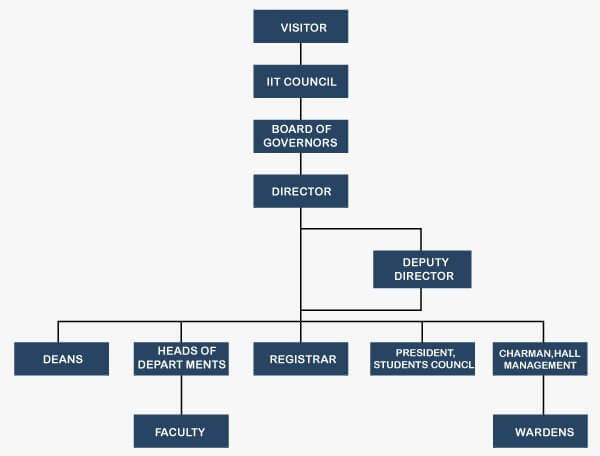
EDUCATION
The grants that are given to IITs is comparatively higher than any other engineering colleges in the country. Most of the other engineering colleges get the total government fund of just Rs. 100–200 million per year, while the amount given to each IIT is between Rs.900–1300 million per year. The ratio of students to faculty is between 1:6 and 1:8. All IITs' internal policy decisions are free from direct government control, but the government has representation on the IIT Council.
In all IITs, the credit system that is based on the performance evaluation is followed in which the total marks set a basis for the calculation of grades. These grades are assigned out of 10 to a range of marks. By using a weighted average of overall semesters, the cumulative Grade Point Average or GPA is calculated.
PROGRAMS OFFERED AT IITs
The IITs are well known for its undergraduate and postgraduate courses that are available in these institutes. Computer science engineering, electrical engineering, civil engineering, and mechanical engineering are some of the engineering programs that are offered by these IITs. Besides these engineering programs, some other Design and Business Management courses are also offered at IITs, which are listed below:
- UG Programs
- Bachelor of Technology (B. Tech)
- Bachelor of Science (BS)
- Bachelor of Architecture (B. Arch)
- Dual Degree (B. Tech & M. Tech)
- Dual Degree (BS & MS)
- Bachelor of Design ( B. Des)
- PG Programs
- Master of Science (MSc)
- Master of Technology (M. Tech)
- Master of Business Administration (MBA)
- Dual Degree (MSc-PhD)
- Master of Design (M. Des.)
- Master of Philosophy (M. Phil)
- Master in Medical Science and Technology (MMST)
- Master of City Planning (MCP)
- Master of Arts (MA)
- Post Graduate Diploma in Information Technology (PGDIT)
- Post Graduate Diploma in Intellectual Property Law (PGDIPL)
- Post Graduate Diploma in Maritime Operation & Management (PGDMOM)
CRITICISM
- BRAIN DRAIN: A major concern about the IITs is that they encourage the brain drain. In the 1990s, the trend was the opposite. At that time, hundreds of IIT graduates who completed their degrees in the US started coming back to India. About 25,000 IITians have settled in the United States from 1953 to 1990, before the implementation of liberalization in the country. In the opinion of some critics, there is no means to provide a subsidizing education to the students of these IITs because it benefits the US as these IITians shift there after completing their education, which helps the country to get the subsidized education at the cost of Indian taxpayers' money.

While according to the opposition, the emigration of IITians to other countries helps in the expansion of foreign exchange reserves for the country as these graduates sent the remittance to their homes. There was a substantial trade deficit in the country until the 1990s.
- ENTRANCE COMPETITION: The entrance exam of the IITs is called IIT-JEE. The exam is highly competitive, which led to the establishment of a very large number of coaching institutes in the country. The fee structure of these classes is very high. As per the opinion of some critics, these institutes favors those students who are from richer backgrounds. As per an estimation, about 95% of the students who crack IIT-JEE had joined coaching classes.
The aptitude level may vary in different students, and they may have skills of different paradigms and fields. But in Indian families, a student is pressurized or forced to clear the IIT JEE exam. In 2006, the exam pattern was restructured, but this idea didn't work and cause a substantial rise in the number of coaching classes. This was done with the aim of reducing the dependency of students on coaching classes. The pattern does not focus on fundamental applications and might reduce the quality of students, which causes its failure.
- LANGUAGE BARRIER: There is one more problem for the students who don't know English or Hindi. Because the exam is conducted in these two languages only, this is a big hurdle for the students who know their regional language only. Public interest litigation was made by the Gujarati Sahitya Parishad in the Gujarat High Court in September 2011 for conducting the exam in Gujarati also. Another petition was filed by the Navsari's Sayaji Vaibhav Pustakalaya Trust at Madras High Court in October for conducting the exam in Tamil.
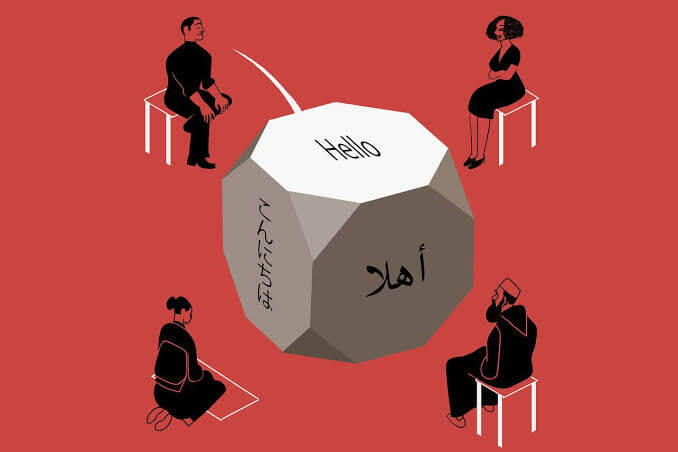
In their petition, they argued that if the exam is not conducted in regional languages, then this is a violation of Article 14 of the Constitution of India. Article 14 provides equality to everyone before the law.
After a long, the Ministry of Human Resource Development took action on these petitions and directed the National Testing Agency to conduct the exam in 11 regional languages. This change will be applied from 2021.
IIT Frequently Asked Questions
Q. How many IITs are there in the country?
Ans. There is a total of 23 IITs in the country and out of which 16 were established after 2004.
Q. Which is the top IIT in India?
Ans. As per the ranking of NIRF, IIT Madras is the top IIT in 2020 in the country. According to ranking, it is also the best university of the across.
Q. Which one is the best among the new IITs?
Ans. As per the 2020 ranking of NIRF, IIT Hyderabad is the best among the new IITs.
Q. What is the average salary package of an IITian?
Ans. The average annual salary that an IIT graduate offered is 11LPA.
Q. Which is the oldest IIT?
Ans. The oldest IIT in the country is IIT Kharagpur, which was established in 1951. Later in 1959, IIT Kanpur and IIT Madras joined the list.
Q. How does IIIT differ from IIT?
Ans. All branches of engineering are covered by IITs, while only tech-related fields such as CS, ECE, IT, etc., are covered by IIITs.
Q. Who is the ex officio chairperson of the IIT Council?
Ans. The ex officio chairperson of the IIT is the Minister of Education.
Q. Is IIT JEE tough?
Ans. IIT JEE is among the toughest exams in the world. This is not just because of the tough pattern of the exam but also the high competition. In 2020, the number of seats available was just 1.2 percent of the total number of candidates who applied.